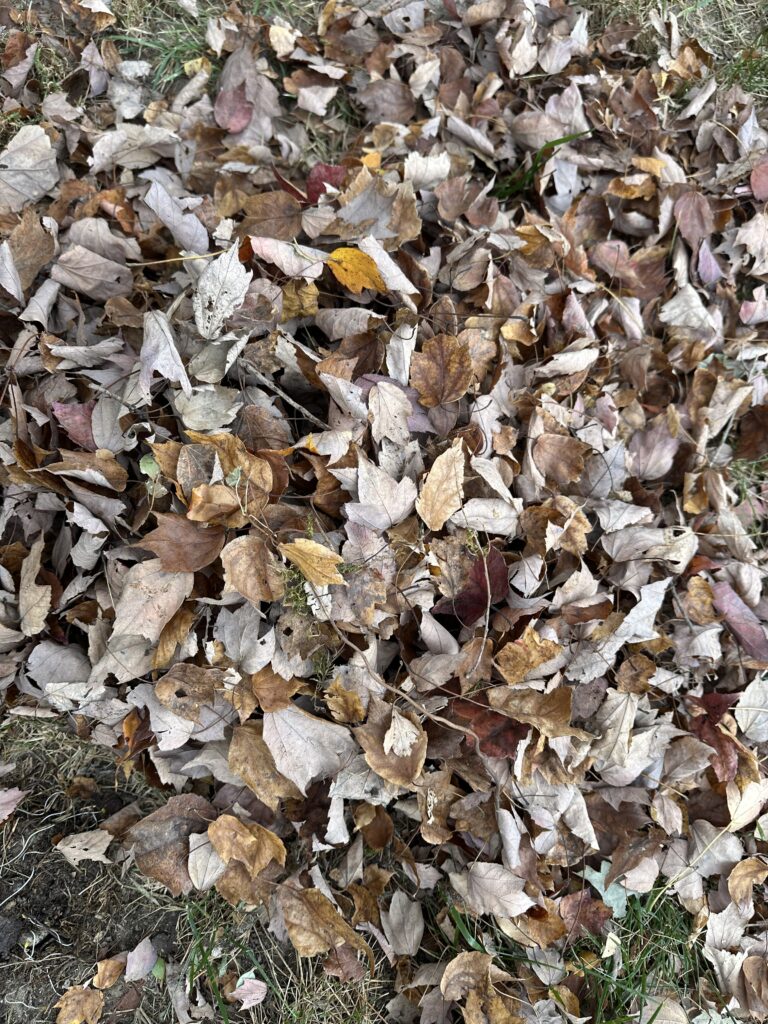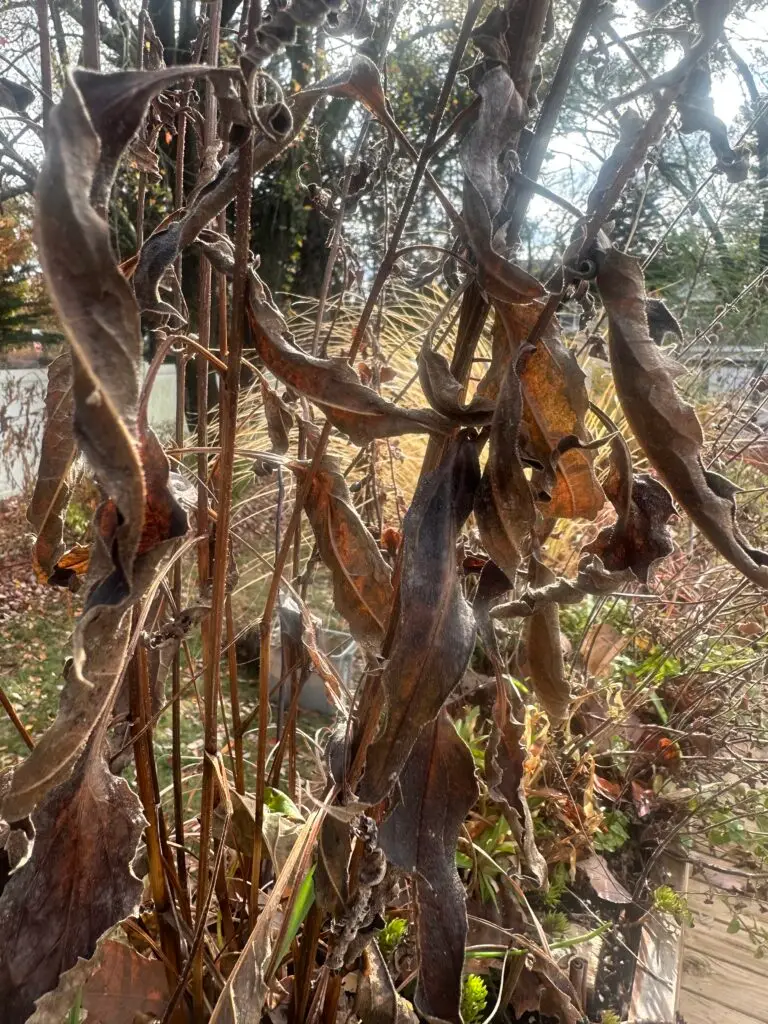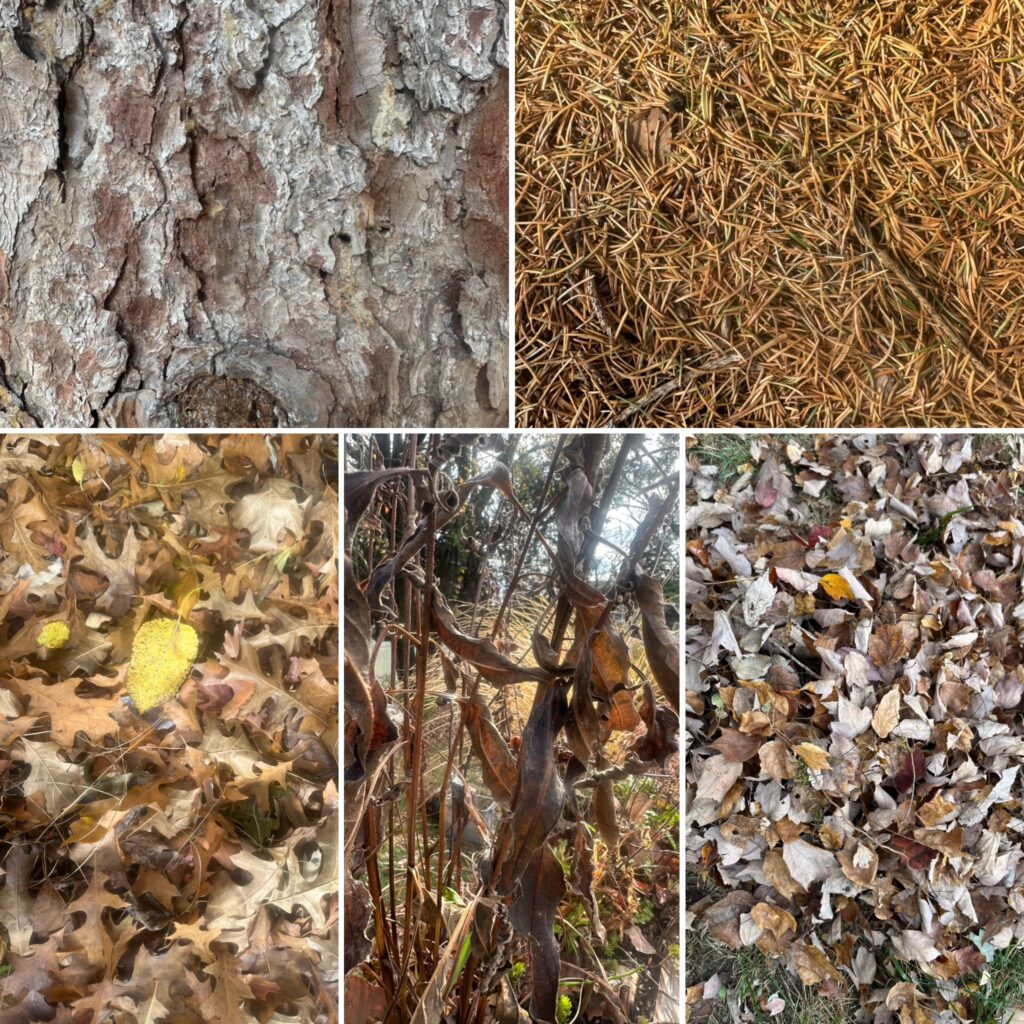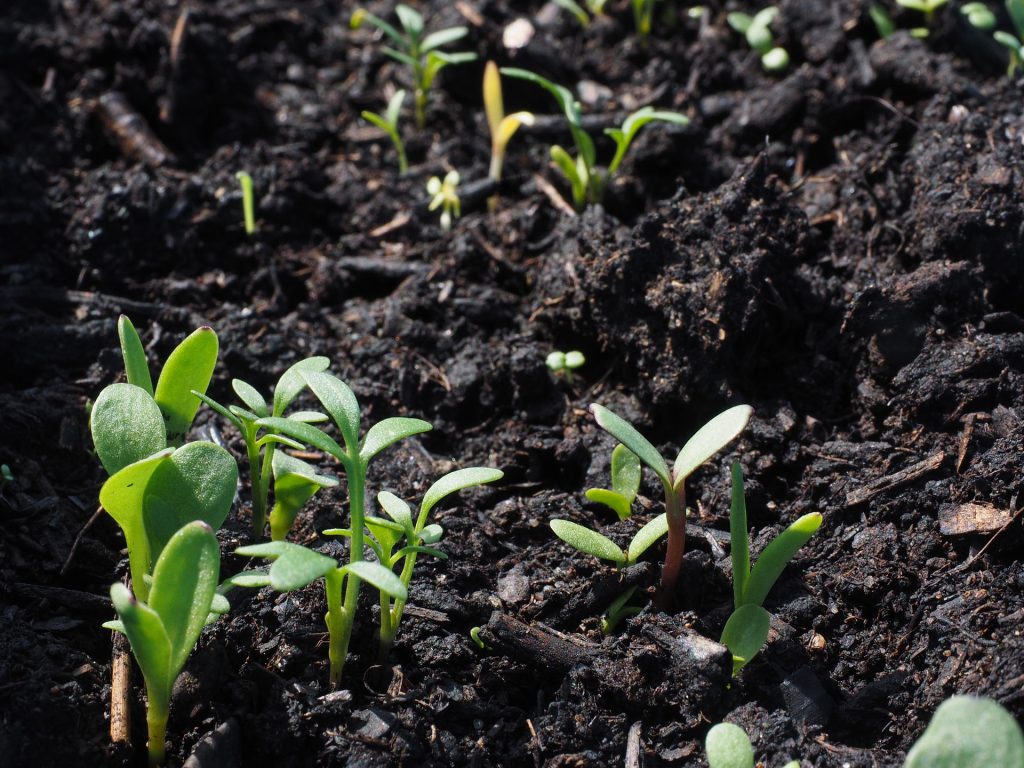The Dark Side of Bark Mulch: Why Less (or None) is More
For many gardeners, bark mulch is the go-to solution for weed control and soil insulation. But as we learn more about sustainable gardening, the drawbacks of bark mulch are becoming clear.
While it may seem beneficial, bark mulch actually has a number of negative effects that can make it less desirable than we once thought. I wanted to take a closer look at why bark mulch might be doing more harm than good and explore some alternative, soil-friendly solutions.
1. Bark Mulch and Weeds
Ironically, although bark mulch is widely applied to suppress weeds, it often creates the ideal environment for weed seeds to establish themselves. Mulch provides a loose, airy surface where weed seeds can easily take root and thrive, especially as it breaks down and creates an organic layer. With thick layers of mulch, weed seeds are protected from sun, wind, and even many herbivores, giving them an ideal space to grow.
Once weeds establish themselves in mulch, they can become even more challenging to remove. In some cases, attempting to pull weeds out can bring large chunks of mulch with them, disturbing any nearby plants and leaving gaps for new weeds to establish.
2. Impact on Soil Health and Microbial Life
Bark mulch doesn’t necessarily break down in a way that directly benefits the soil. As it decomposes, it can pull nitrogen from the soil surface, robbing essential nutrients from nearby plants. This process of nitrogen “lock-up” occurs because the microorganisms breaking down the wood need nitrogen to do their job, and they pull it from the surrounding soil if it’s not present in the mulch itself.
Additionally, bark mulch can inhibit beneficial soil organisms, especially if applied too thickly. With more than 1–2 inches of bark mulch, soil moisture can fluctuate, and oxygen levels may drop, which can harm soil-dwelling organisms such as earthworms and beneficial fungi. Thick mulch can also suffocate the soil, reducing its ability to support plant health.
3. Root Suffocation and Stem Rot
Many gardeners apply bark mulch as an annual practice, but piling it up year after year can result in a buildup that suffocates plant roots. This is particularly true when the mulch is applied close to the base of trees, shrubs, or other perennials, where it can trap moisture against stems and trunks, leading to rot, disease, pathogens, and even plant death.
Instead of an annual practice, mulch should be applied sparingly and only when necessary. A layer of just 1 to 2 inches, renewed only as needed, is enough to provide some benefits without leading to soil issues.



4. Alternatives to Bark Mulch
If the goal is weed control and soil health, there are alternative approaches that can be more effective and sustainable:
Living Ground Covers: Planting low-growing ground covers like mossy or woodland phlox, ferns, viola or creeping sedums can provide a natural, living mulch that outcompetes weeds and protects soil health.
Recycled Cardboard Weed Barrier: Clean cardboard, free from tape and staples, make a great recycled mulch. Saving your Amazon delivery boxes and removing tape and labels, can help you kill off lawn grass and weeds. Do this just prior to leaf drop and you have a sustainable approach to mulching using recycled materials and leaves from your neighborhood.
Leaf Mulch or Compost: Unlike bark, leaf mulch and compost break down quickly, enriching the soil with organic matter and nutrients as they decompose. Leaf mulch, in particular, mimics a natural forest floor and is rich in minerals.
Chop and Drop: Leaving stems and flower-heads through the winter months, provides a ready-available dry plant material to use as a soil improver and preferable to mulching with bark. This can be effective if you’re creating a naturalistic meadow and encourage germination of self-sown seedlings for a successional meadow that will thrive for generations.
Grass Clippings or Straw: For vegetable gardens, a thin layer of grass clippings or straw is another option that provides soil insulation and some weed suppression while breaking down quickly and adding nutrients to the soil.
5. If You Must Mulch: Best Practices
If you prefer or need to use bark mulch, consider applying it more sparingly and following these best practices:
Limit the Depth: Keep the mulch layer to 1–2 inches maximum.
This minimizes soil suffocation and nitrogen depletion while still offering some weed suppression.
Never “Volcano Mulching”: Keep the mulch away from the base of trees, shrubs, and perennials.
Leave a 2–3 inch gap around stems to prevent moisture buildup, rot, and disease.
Skip Annual Applications: Rather than reapplying every spring, only refresh mulch as needed to maintain the 1–2 inch depth.
Final Thoughts:
Bark mulch may have its place, but it’s important to recognize its limitations and consider more sustainable options. By being mindful about its use and looking into alternatives, we can improve soil health, reduce weeds, and promote a more balanced, eco-friendly garden environment. After all, the goal of a garden is not only to look beautiful but to support a thriving ecosystem below the surface.
Resources to help you explore alternatives to bark mulch, focusing on sustainable options that promote healthy soil and natural weed control.
Living Ground Covers
Ground Cover Plants List – The Spruce: Best Ground Cover Plants for Your Yard
Learn about a variety of low-growing plants that provide excellent ground cover, reduce weeds, and improve soil health.
Native Ground Covers – Audubon Society: Using Native Ground Covers in Your Garden
Find native ground cover plants that support biodiversity and work well in North American gardens.
Leaf Mulch
Benefits of Leaf Mulch – Fine Gardening: Why You Should Use Leaf Mulch
Explore the many benefits of using leaf mulch, from soil enrichment to weed suppression.
DIY Leaf Mulch Guide – Gardeners Path: How to Make and Use Leaf Mulch
A step-by-step guide on creating your own leaf mulch, perfect for eco-conscious gardeners.
Compost and Organic Mulch Options
How to Use Compost as Mulch – The Old Farmer’s Almanac: Compost and Mulch Basics
Learn how to use compost as mulch to improve soil health and provide nutrients.
Choosing the Right Organic Mulch – Mother Earth News: Organic Mulches for the Home Garden
Find various organic mulching options that enrich the soil and support plant growth.
Straw and Grass Clippings
Using Straw as Mulch – Grow Organic: Straw Mulch for Gardens
An in-depth look at using straw for mulch, which is especially beneficial in vegetable gardens.
Grass Clippings Mulch Guide – Savvy Gardening: How to Use Grass Clippings in Your Garden
Discover how to use grass clippings effectively as a mulch and understand best practices for avoiding common issues.
Wood Chip Mulch (in Moderation)
Pros and Cons of Wood Chips – Permaculture Research Institute: Using Wood Chips as a Garden Mulch
While wood chips aren’t the same as bark mulch, they can be a great alternative in moderation. Here’s what to know before you use them.
Arborist Wood Chips for Soil Health – Arbor Day Foundation: Benefits of Wood Chip Mulch
Find out why locally-sourced wood chips from arborists are a sustainable choice and how they differ from bark mulch.
Cover Crops as Living Mulch
Using Cover Crops – Sustainable Agriculture Research & Education (SARE): Cover Crops for Gardens
Cover crops can act as a “living mulch” by covering soil and preventing weeds. SARE’s guide provides insights on how to incorporate them into your garden.
Annual Cover Crops Guide – Cornell University Cooperative Extension: Annual Cover Crops in Home Gardens
Learn how to use annual cover crops to improve soil and reduce weed pressure.
Sustainable Mulching Practices
Natural Mulching Techniques – Rodale Institute: Mulching for Healthy Soil
Discover alternative mulching techniques that improve soil structure and encourage soil biodiversity.
Mulching Without Harm – Fine Gardening: The Right Way to Mulch
This article covers mulch application best practices, so if you do use mulch, you do it sustainably and effectively.



